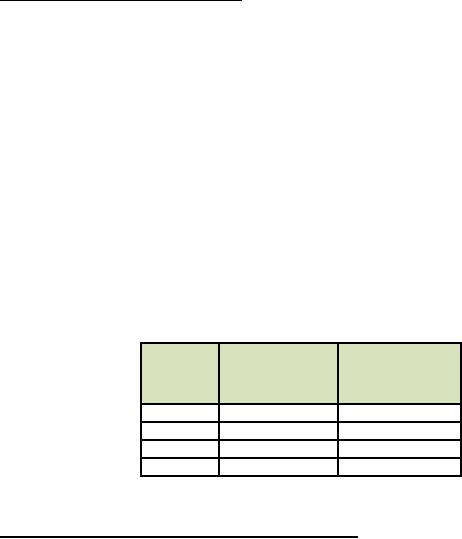
JOTP-011
5 December 2014
APPENDIX H. NON-SEQUENTIAL TESTS/ASSESSMENTS
ANNEX 4. OTHER SAFETY TESTS/ASSESSMENTS TO BE CONSIDERED
b. Drop Height. In order to achieve the impact velocity of 45.7 m/s (150 ft/sec), this
environment is commonly replicated by a 116 m (380 ft) freefall drop unless specific and validated
evidence is presented to the contrary.
c. Number of Drops. It is not expected that a munition would be dropped more than once
from this extreme height during its service life; thus, only one drop is required.
d.
Test Temperature. Ambient.
H.4-8 VERTICAL REPLENISHMENT.
Sea launched munitions may be moved as an under-slung load by helicopter over land and at sea
(often referred to as Vertical Replenishment at Sea or VERTREP). In the case of over land
movement, the shock associated with set-down will typically be addressed by other tests in the
environmental sequence. For VERTREP, the ship's motion affects the impact velocity and is
directly related to sea-state. The AECTPs currently do not provide guidance for suitable test levels
for VERTREP, but the values provided in Table H4-1 are based on those from Def-Stan 00-35,
Part 3, Issue 4. The impacts at lower sea-states may be addressed by other tests in the
environmental sequence so there will be no requirement to specifically test for these, but at sea-
states 5 and 6 consideration should be given to addressing these impacts. VERTREP is commonly
replicated by a freefall impact in accordance with AECTP 400, Method 414 and should be
conducted as a sequential test if required and not covered by other testing. Sea based munitions
are expected to be safe for use following under-slung helicopter movement.
TABLE H4-1. IMPACT TEST SEVERITIES FOR VERTREP
Total
Equivalent Drop
Sea-
Impact Velocity
Height
State
(m/s)
(m)
3
3.3
0.6
4
4.0
0.8
5
5.6
1.6
6
6.9
2.4
H.4-9 ADJACENT MUNITION FIRING ACOUSTICS.
The surface launched multi-munition firing acoustic environment should be considered as
potentially damaging to adjacent munitions. If determined to be sufficiently severe to test the
munition, the test should be conducted in accordance with MIL-STD-810, Method 515, with
tailored test levels based on measured data will normally be used. Test severities should be derived
in accordance with MIL-STD-810, Method 514, Annex F.
H.4-4
For Parts Inquires call Parts Hangar, Inc (727) 493-0744
© Copyright 2015 Integrated Publishing, Inc.
A Service Disabled Veteran Owned Small Business